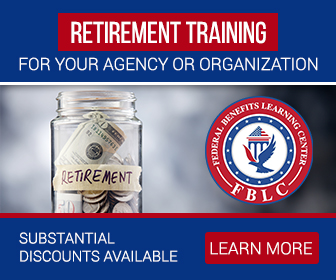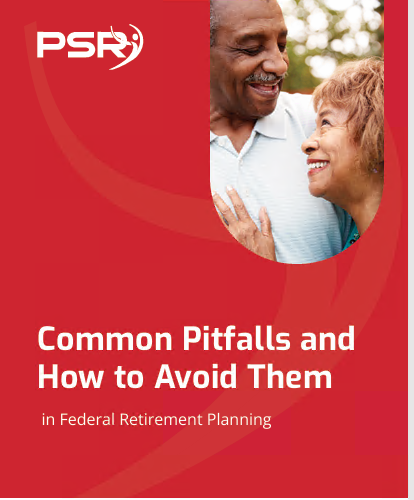Key Takeaways
-
Leaving federal service requires more than just a resignation letter—timing, paperwork, and benefit elections directly impact your retirement income.
-
Missing critical deadlines or skipping steps may lead to permanent loss of benefits or increased out-of-pocket costs.
Know Your Retirement Eligibility Before You Exit
Before you finalize your departure, confirm that you meet the eligibility requirements for retirement under your system—FERS or CSRS. In 2025, most government employees fall under the Federal Employees Retirement System (FERS).
- Also Read: New Rules for Federal Employees in 2025: What You Need to Know to Stay Ahead
- Also Read: Seven TSP Fund Allocation Strategies Federal Employees Are Using to Strengthen Their Retirement Portfolios
- Also Read: Military Buyback for Federal Employees: Is It Really Worth It? Here’s What You Need to Weigh Up
-
Minimum retirement age (MRA) under FERS ranges from 55 to 57 depending on your birth year.
-
You need at least 30 years of service at MRA, 20 years at age 60, or 5 years at age 62 to qualify for an immediate retirement.
-
If you leave before reaching full eligibility, you may only be eligible for deferred retirement, which limits your access to health benefits.
Leaving even a few months too early can delay your annuity or reduce your benefits permanently.
Understand the Timing of Your Separation
Your final day at work is not just symbolic—it affects the start date of your pension and other benefits.
-
FERS annuity begins the first day of the following month after you separate if you meet retirement eligibility.
-
If you leave on the last day of the month, your annuity begins the very next day. But if you leave on any earlier day, it delays your pension start until the first of the next month.
To avoid a needless gap in income, try to set your separation for the last working day of a month.
TSP Withdrawal Readiness
As you leave federal service, your Thrift Savings Plan (TSP) becomes fully available for withdrawal, but the choices you make now will affect your long-term financial stability.
-
You are not required to withdraw immediately.
-
In 2025, Required Minimum Distributions (RMDs) begin at age 73.
-
You may choose installment payments, partial withdrawals, or full rollover into an IRA or other eligible account.
Ensure your TSP account is updated with:
-
Correct beneficiary designations
-
Current contact details
-
Investment allocations aligned with retirement plans
Any oversight in TSP decisions could mean higher taxes or missed income opportunities.
Don’t Overlook Health Coverage Transitions
One of the most significant assets you carry into retirement is your Federal Employees Health Benefits (FEHB) coverage.
-
To keep FEHB in retirement, you must have been enrolled for the 5 years immediately preceding your separation (or since first eligible).
-
Your coverage continues seamlessly into retirement if you elect immediate retirement and meet the eligibility.
-
If you separate under deferred retirement, you lose your FEHB rights permanently.
You may also need to plan for Medicare Part B enrollment when you turn 65. In 2025, Part B carries a standard premium of $185 and a deductible of $257.
Failing to enroll during your Initial Enrollment Period (IEP) can lead to lifelong penalties unless you qualify for a Special Enrollment Period.
Review Federal Life Insurance Carefully
The Federal Employees’ Group Life Insurance (FEGLI) coverage may follow you into retirement—but only if you meet the conditions.
-
You must be enrolled for the 5 years immediately preceding retirement.
-
You can carry Basic FEGLI and some optional coverages into retirement, but premiums increase substantially after age 65.
-
Consider whether reducing or cancelling optional coverage makes financial sense in retirement.
Failure to review these options before leaving could result in surprise deductions from your annuity—or coverage you no longer need.
Know How Sick and Annual Leave Affects Your Pension
Unused leave can enhance your benefits—but only if handled correctly before you separate.
-
Unused sick leave is converted into additional creditable service time under FERS. Every 174 hours adds one extra month of service.
-
Annual leave is paid out in a lump sum after separation.
If your unused leave can push you across a service-year threshold, it could permanently increase your annuity.
Survivor and Spousal Benefit Decisions
If you’re married or have dependents, electing survivor benefits can be critical.
-
If you want your spouse to continue receiving health benefits after your death, you must elect a survivor annuity.
-
This must be decided at retirement; changes after retirement are restricted and may require court orders.
-
Spousal consent is required if you choose less than the maximum survivor benefit.
Missing this step is a common mistake and often irreversible.
Social Security Coordination
Many government employees retire under FERS, which includes Social Security.
-
You may begin claiming Social Security as early as age 62, but benefits are permanently reduced if you claim before full retirement age (FRA), which is 67 in 2025 for those born in 1963.
-
If you retire before 62 under FERS, you may receive the FERS annuity supplement—but it ends at 62 regardless of whether you begin Social Security.
Make sure your Social Security record is accurate before leaving, and understand how your retirement timeline aligns with claiming options.
Manage Your Military Service Credit (If Applicable)
If you served in the military before your federal career, you may be able to buy back that time to increase your annuity.
-
Buyback must be completed before you retire—ideally years earlier to avoid interest accrual.
-
In 2025, military service credit is still subject to 3% of basic pay for post-1956 service, plus interest if paid after 3 years.
Delaying this process could cost thousands and lower your final annuity.
Prepare for the Retirement Application Process
The process isn’t automatic. Start your application process at least 3-6 months before your planned retirement date.
Here’s what to gather:
-
SF 3107 (Application for Immediate Retirement under FERS)
-
Documentation of military service, if applicable
-
Beneficiary forms for FEGLI and TSP
-
Evidence of FEHB enrollment and qualifying coverage
Early preparation allows time to correct any service record issues or missing documents.
Final Retirement Counseling Is a Must
Before you exit federal service, schedule a one-on-one retirement counseling session through your agency’s HR department.
This session will help:
-
Identify service discrepancies
-
Review all benefit elections
-
Project annuity estimates
It also ensures you haven’t missed deadlines that would reduce your entitlements. Don’t treat this step as optional—it’s one of the most important things you can do.
Leave With Confidence, Not Regret
When it comes to retiring from federal service, the stakes are high. One overlooked form, miscalculated date, or missed enrollment window can translate into permanent financial loss or gaps in coverage.
Use this checklist as your starting point—not your endpoint. Before making your final decision, get in touch with a licensed professional listed on this website. They can walk you through your options, check for common errors, and help you retire with clarity and confidence.











